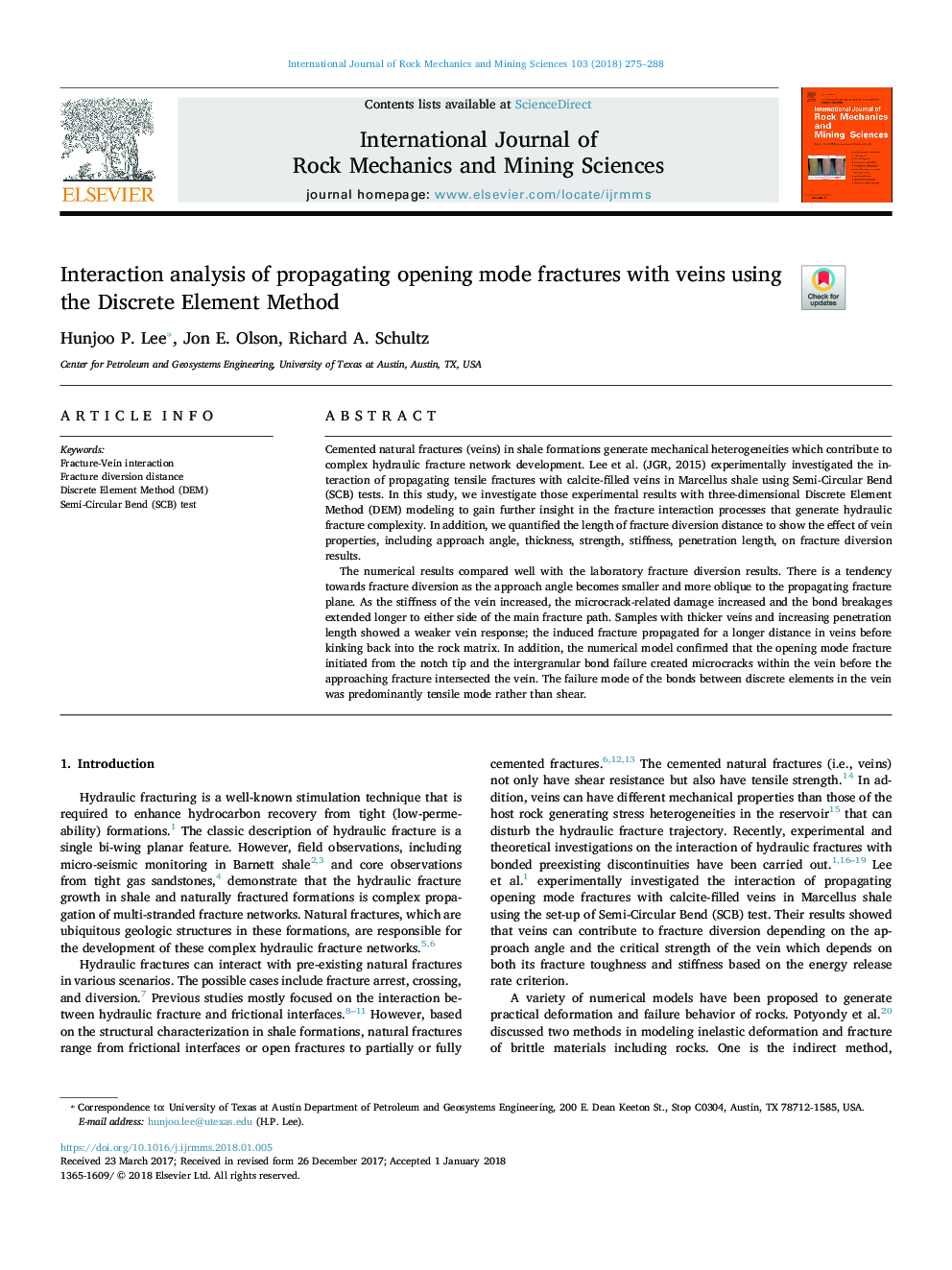| Article ID | Journal | Published Year | Pages | File Type |
|---|---|---|---|---|
| 7206350 | International Journal of Rock Mechanics and Mining Sciences | 2018 | 14 Pages |
Abstract
The numerical results compared well with the laboratory fracture diversion results. There is a tendency towards fracture diversion as the approach angle becomes smaller and more oblique to the propagating fracture plane. As the stiffness of the vein increased, the microcrack-related damage increased and the bond breakages extended longer to either side of the main fracture path. Samples with thicker veins and increasing penetration length showed a weaker vein response; the induced fracture propagated for a longer distance in veins before kinking back into the rock matrix. In addition, the numerical model confirmed that the opening mode fracture initiated from the notch tip and the intergranular bond failure created microcracks within the vein before the approaching fracture intersected the vein. The failure mode of the bonds between discrete elements in the vein was predominantly tensile mode rather than shear.
Keywords
Related Topics
Physical Sciences and Engineering
Earth and Planetary Sciences
Geotechnical Engineering and Engineering Geology
Authors
Hunjoo P. Lee, Jon E. Olson, Richard A. Schultz,
